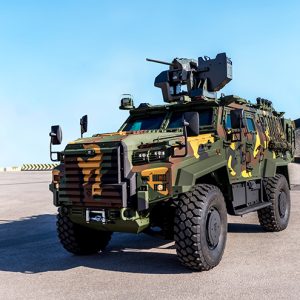Autonomous drone swarms have moved from theory to practice, redefining strike, reconnaissance and force protection across every domain. Built on low-cost air, surface and subsurface platforms bound together by AI, mesh networking and mission autonomy, swarming now sits at the heart of next‑generation combat power and defence planning.
For militaries confronting mass, attrition and long-range precision, autonomous drone swarms offer scale at speed. The approach pairs inexpensive, expendable vehicles with autonomy at the edge, compressing the sensor–to–shooter loop and complicating an adversary’s air defence picture. As Ukraine, NATO allies and Türkiye advance their programs, doctrine and industry are shifting in tandem to exploit swarming’s advantages while mitigating ethical and operational risks.
Why swarming now: technology, cost and doctrine
Swarming autonomy builds on simple rules—locate, converge, attack, disperse—executed in parallel by many agents. In practice, autonomous drone swarms distribute sensing, jamming, decoying and strike across dozens of nodes. The loss of individual drones barely degrades the mission; the collective behaviour matters. Falling unit costs, compact AI compute, resilient radios, and open architectures have turned swarming from a lab concept into a fieldable capability.
Doctrine is catching up. Multi‑Domain Operations, maritime distributed lethality and network‑centric C2 all assume dense machine‑to‑machine coordination. Swarms saturate defences, exploit seams in the electromagnetic spectrum and generate dilemmas across domains—exactly the effects modern commanders seek.
Key Facts
Battlefield debut: Ukraine has conducted routine combat use of AI‑enabled swarms, coordinating strikes with minimal operator input.[1]
US fielding: The Pentagon’s Replicator program is transitioning hundreds of attritable autonomous systems to units, en route to larger scale.[2][3][4]
NATO ecosystem: DIANA now spans 180+ test centres, accelerating autonomy, resilient comms and counter‑swarm tech.[5][6]
Türkiye’s progress: HAVELSAN is maturing digital swarm logic across UGV/UAV/USV, and ASELSAN’s Albatros‑S USV swarm has executed coordinated attacks at sea.[7][8][9]
What has changed on the battlefield
Operational reality in Ukraine. Reports indicate Ukrainian units now use small swarms—typically three to eight drones—to share targets, deconflict final attacks and adapt in flight, with larger groups in testing. The software allocates roles dynamically, selects the shooter and routes others for ISR or battle damage assessment, reducing bandwidth and operator load while increasing survivability in GNSS‑degraded airspace.[1][10][11]
Adversary saturation. Russia’s mass use of Shahed‑family one‑way attack drones and cruise missiles has forced layered counter‑UAS and hardening measures. Swarms and pseudo‑swarms exploit cost asymmetry and exhaust interceptors, especially when mixed with decoys and glide munitions.[10][12]
Edge autonomy and attritability. Through Replicator, the United States is pushing rapid fielding of low‑cost uncrewed systems across air, land, sea and undersea, with autonomy packages that enable teaming and swarming under electronic attack.[2][3][4] NATO nations are networking C‑UAS and directed‑energy counters; the UK has publicly trialled radio‑frequency directed‑energy weapons (RFDEW) to defeat drone swarms at low cost per shot.[13][14][15]
Türkiye’s digital swarm pathway
Türkiye’s defence ecosystem is converging on autonomous drone swarms from two directions: sovereign software and multi‑domain platforms. HAVELSAN’s “digital troops” architecture advances swarm logic, secure comms and autonomy across UGVs, UAVs and USVs, emphasising local software stacks for security and exportability.[7][9] At sea, ASELSAN’s Albatros‑S program demonstrated multi‑USV teaming and a coordinated strike profile, including a kamikaze terminal effect against a target vessel—an operationally relevant proof of concept for harbour denial and escort screens.[8]
These efforts align with allied concepts for distributed maritime operations and coastal A2/AD. When paired with shore‑based sensors and coastal defence missiles, USV swarms can extend situational awareness, complicate enemy targeting and create persistent picket lines without risking crewed hulls. On land, UGVs equipped with micro‑loitering munitions or launch pods—as shown on HAVELSAN’s Barkan 2 demonstrator—enable combined‑arms teams to distribute lethality while keeping dismounted units dispersed and survivable.[16]
Design principles for credible swarming capability
1) Mission autonomy over “remote control”. True autonomous drone swarms must continue the mission with degraded links. That means onboard perception and decision modules to handle lost‑link, GNSS denial and spectrum congestion—plus authenticated, low‑probability-of-intercept/low-probability-of-detection (LPI/LPD) comms for team coherence.
2) Open, modular architectures. Combat learning cycles demand rapid payload swaps and software updates. Modular open systems (hardware and middleware) let operators compose swarms from ISR, EW, decoy and kinetic nodes as the mission evolves.
3) Resilient C2 and counter‑EW. Mesh networking, frequency agility and autonomy at the edge mitigate jamming. Swarms should carry organic EW to suppress local defenders and protect the formation’s communications bubble.
4) Human command, machine speed. Establish clear human‑on‑the‑loop policy with algorithmic rules of engagement that conform to IHL/LOAC. Commanders set intent and constraints; autonomy executes within guardrails with real‑time aborts available.
5) Training, testing and realism. Integrate swarming into exercises with contested‑EM scenarios and live C‑UAS threats. NATO’s DIANA network and allied ranges now offer depth for iterative, instrumented trials.[5][6]
Industry and supply chain: scaling what works
Economies of scale and dual‑use components define the competitive landscape. In Ukraine, software “strike kits” retrofit commercial drones into semi‑autonomous attackers at scale, while sovereign manufacturers refine purpose‑built airframes.[11] In the US, Replicator is pulling forward attritable UAS and uncrewed surface/undersea systems with an emphasis on domestic production and common autonomy stacks.[2][3][4] For Türkiye, leveraging a deep electronics base and established primes—paired with agile SMEs—can deliver export‑compliant swarming families across domains.
Counter‑swarm demand is rising just as fast. Directed‑energy weapons, programmable air‑burst munitions, multilateration sensors and AI‑enabled fusion are moving from demos into layered defence architectures. Expect procurement lines to bundle “swarms and counter‑swarms” as a single portfolio to manage the offence–defence race.
Risks and ethics: autonomy with accountability
Autonomous drone swarms raise hard questions. Reliability under adversarial conditions, target identification confidence, cyber‑hardening and fail‑safe behaviour must be demonstrated, not asserted. Governance frameworks should codify testing thresholds, red‑team evaluations and audit logs for post‑mission accountability. Nations that show rigorous assurance will set the export norms and win trust.
Bottom line: swarming has arrived. The winners will combine sovereign autonomy stacks, mass‑producible air/sea/land platforms, realistic training and credible safeguards. Türkiye and NATO allies are well placed to shape not just the technology, but the doctrine and norms that govern it.
Internal link
Related analysis: China debuts swarm‑capable USVs.
References
[1] Wall Street Journal — “AI‑Powered Drone Swarms Have Now Entered the Battlefield,” Sep 2, 2025. Link
[2] DefenseScoop — “DOD touts ‘successful transition’ for Replicator initiative,” Sep 3, 2025. Link
[3] USNI News — “Report to Congress on DOD’s Replicator Initiative,” Aug 26, 2025. Link
[4] Congressional Research Service — “The Replicator Initiative: Background and Issues,” Aug 25, 2025 (PDF). Link
[5] NATO DIANA — “Autonomy & Unmanned Systems (Challenge),” 2025 (PDF). Link
[6] Defence Industry Europe — “DIANA doubles its transatlantic network,” Mar 14, 2024. Link
[7] HAVELSAN — “Swarm Intelligence and Tactical Cohesion in Digital Troops,” Jun 28, 2025. Link
[8] Naval News — “ASELSAN demonstrates new swarm USV capabilities,” Jun 20, 2022. Link
[9] HAVELSAN — “Defence Reimagined: HAVELSAN’s Multi‑Domain AI Strategy,” Jul 21, 2025. Link
[10] UACrisis (situation report) — Russian mass drone and missile attacks; operational context for counter‑UAS, Sep 4, 2025. Link
[11] Financial Times — “Auterion to ship 33,000 AI drone ‘strike kits’ to Ukraine,” Aug 2025. Link
[12] The Week — “Drones upend rules of war in Ukraine,” Jul 2025 (overview of mass drone effects). Link
[13] UK Ministry of Defence — “British soldiers take down drone swarm in groundbreaking use of radio‑wave weapon,” Apr 17, 2025. Link
[14] DefenseScoop — “British troops test RFDEW to defeat swarms,” Dec 23, 2024. Link
[15] UK Defence Journal — “British troops ‘shoot down’ swarm of over 100 drones,” Apr 17, 2025. Link
[16] Army Recognition — “HAVELSAN integrates swarm loitering munitions on Barkan 2 UGV,” Aug 27, 2025. Link
Further Reading
Breaking Defense | Defense News | NATO — Emerging & Disruptive Technologies
Editor’s note: This piece updates and replaces earlier background content on swarming with current operational evidence and allied programs (2024–2025).








